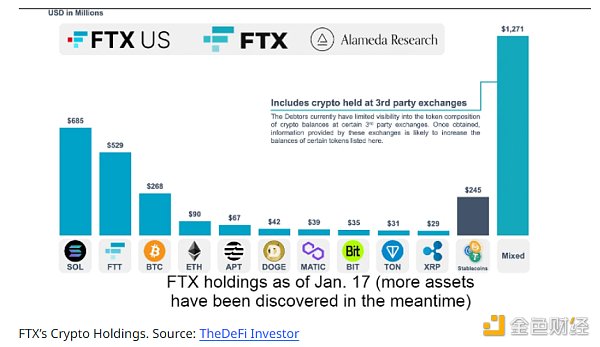Zhou Xiaochuan The universality of digital currency is crucial.
The Vital Importance of Digital Currency Universality according to Zhou XiaochuanSource: Mobile Payment Network
Recently, Zhou Xiaochuan, Vice Chairman of the Boao Forum for Asia and former governor of the People’s Bank of China, published an article titled “Payment Systems and Digital Currency” in China Finance Magazine, detailing the evolution of payment systems and the classification of digital currencies.
He stated that digital currency is born out of the digitalization of payment systems. Digital currencies cannot be established and exist independently; they need to rely on payment systems to operate.
From a conceptual perspective, digital currencies can be divided into broad digital currencies and narrow digital currencies. In a broad sense, any form of digital payment tool can be called a digital currency to some extent; narrow digital currencies are often self-defined and named by technical developers, who usually believe that the digital currencies they have developed are the only ones that should be called digital currencies, resulting in disputes.
- From Ride-Sharing to Digital Currency Didi Chuxing Accelerates with the Digital Yuan
- FTX Founder Sam Bankman-Fried Enters the Courtroom: A Trial Full of Twists and Turns
- FTX Founder’s Shady Messaging Moves: The Signal of Trouble
He believes that the entire process of the emergence and development of digital currencies should be understood from the perspective of broad digitalization of payment systems, which allows for a broader understanding, selection, promotion, and experimentation. Narrow digital currencies lack persuasive power. In addition, the development of digital currencies should also adhere to the principle of competition, where those that are competitive and meet market conditions can achieve broader applications. It is not persuasive to claim that only one’s own digital currency is valid while others are not.
In terms of attributes, Zhou Xiaochuan classified digital currencies from multiple dimensions:
First, based on accounts or tokens. Bitcoin and Ethereum, using blockchain technology, are token-based. Account-based digital payments, such as Alipay and WeChat Pay, are based on accounts. Credit cards and debit cards are also payment systems based on accounts.
Second, whether they are retail-oriented or wholesale-oriented. If the transaction is carried out between central banks (or financial institutions), regardless of the transaction amount, it is considered wholesale; transactions between other companies, merchants, and individuals are considered retail. The definitions of wholesale and retail also vary across countries. It is evident that what China is currently focusing on, whether it is WeChat Pay, Alipay, or the digital currency research institute’s development of digital renminbi, is primarily oriented towards retail.
Third, whether they are privately issued or issued by central banks, leading to stable or unstable coins. Digital currencies issued by central banks are known as Central Bank Digital Currencies (CBDC), which are highly stable; digital currencies issued by other entities are considered private digital currencies.
Fourth, whether they are centralized or decentralized. This is related to whether they are based on accounts or tokens. Centralized systems are considered to have government regulation, so the idea of decentralization has become popular.
Fifth, whether they earn interest or not. In other words, regardless of who issues the digital currency, whether or not it pays interest to the holders can be a policy choice. It is also possible to not pay interest initially and change to paying interest in the future. If digital currencies can earn interest, they have an additional use case. In times of financial crises or economic downturns, some countries may need to implement negative interest rates, giving interest-earning digital currencies an advantage.
Zhou Xiaochuan believes that digital currency can be classified in multiple dimensions. Whether each classification is justified and whether it can stand the test of time is a matter of personal opinion. Given the current conditions of multiple technologies and competing solutions, interoperability is crucial for all categories.
He stated that interoperability is an important characteristic that all digital currencies must consider in the future. When digital currencies are implemented in retail systems, they will face a series of challenges similar to those encountered during the implementation of credit cards. It is especially important to handle the relationships and interests of issuing banks, card organizations, acquiring institutions, and cardholders.
In terms of currency levels, the current development of China’s digital currency mainly targets M0, which refers to the cash in circulation. Zhou Xiaochuan stated that China’s digital currency focuses on M0, but it should not be understood as limited to physical cash only.
As for whether M1 is a commercial bank currency or a central bank currency, he expressed that the funds in M1 deposit accounts are also highly reliable. The reliability depends on factors such as the size of the bank, whether it is covered by deposit insurance, and whether it falls within the deposit insurance limits. Commercial banks are highly regulated and deposits are protected by deposit insurance mechanisms. The deposits in accounts of large banks are essentially as secure as the currency issued by central banks. To express the reliability of currency in terms of probability, if the reliability of banknotes issued by central banks is 99.9% (why not 100%? Because individual banknotes can still have issues), the reliability of M1 in large or medium-sized banks within the deposit insurance limits is at least 99.5%.
He believes that digital currency focuses on retail payments and M0, which is related to efficiency gaps. When further digitalizing, some areas can improve efficiency by 50%, indicating great potential, while in other areas that are already highly digitalized, the space for efficiency improvement may be only 10%. Therefore, after comparing the analysis of efficiency improvement spaces, the conclusion drawn is that digital currency places more emphasis on retail payments and the broader M0 field.
Currently, the digital yuan adopts a dual-layer operating system. Regarding this, Zhou Xiaochuan stated that the dual-layer operating system aims to accommodate several parallel technological routes for development and trial operations. After the central bank completes the overall design in the first layer, second-layer institutions can develop digital currencies or digital payment systems.
In terms of competition among second-layer institutions, he believes that coordination, standardization, and regulation are needed. First, second-layer payment institutions must be licensed. To develop other banking businesses beyond payment, separate licenses must be obtained in compliance with regulations, and crossing boundaries should not be allowed arbitrarily. Second, developed products must be secure and compliant, following relevant regulations, especially in terms of anti-money laundering, anti-terrorism financing, anti-weapon trading, anti-drug trading, anti-cross-border gambling, and protection of user privacy. Third, after a certain period of product promotion, efforts should be made to achieve interoperability or convertibility. This does not mean that the product must be universally applicable from the start, as it may hinder innovation. However, if it is not made widely applicable for a long time, it will affect the efficiency and user benefits of the entire payment system. Fourth, exclusive competition for financial infrastructure should be avoided, and exclusive measures should not be implemented to avoid impacting overall security and efficiency.
The central bank needs to play a role in supervising and maintaining the stability of the value of digital currency, and pay attention to the construction of clearing infrastructure. Therefore, he mentioned that the central bank can promote interoperability between different payment products, improve the interoperability between products, and make it easier to switch between different payment products.
He also emphasized that the dual-tier system has always been adhered to in the development of digital currency in China. This also indicates that the research and development of China’s digital currency system is a design concept of orderly development, multiple payment systems, parallel digital channels, competition, mutual improvement, and progressive development. The research and development and pilot project plans in the dual-tier system may include several payment products that can be experimented with and promoted.
We will continue to update Blocking; if you have any questions or suggestions, please contact us!
Was this article helpful?
93 out of 132 found this helpful
Related articles
- Can Friend.tech and TimeStore really work in China?
- Million-Dollar Shuffle FTX Cold Wallets Sneak $19M in Solana and Ether to Crypto Exchanges
- Breaking News: JPMorgan’s Digital Asset Hits $1 Billion Daily Transactions!
- China’s Digital Yuan Goes Global: A Blockchain Odyssey
- Comprehensive Analysis of MEV Common MEV Attacks, Related Ecosystems, and PBS
- Clear out while the time is right? FTX and Alameda-related addresses recently transferred $30 million worth of assets.
- A tweet exploded US bonds. What did Bill Ackman, who closed his short position, really see?






